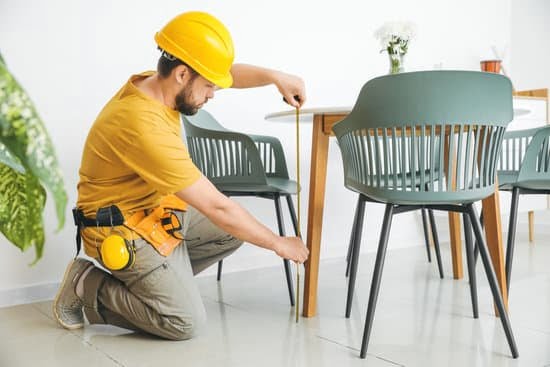Are you wondering how to stop puppies from chewing on woodwork? Puppies are notorious for their love of chewing, and woodwork seems to be a favorite target. In this article, we will explore why puppies engage in this behavior and provide practical tips on how to prevent it.
Puppies chew on woodwork for various reasons, including teething, boredom, anxiety, and exploration. Understanding the underlying reasons for this behavior is crucial in effectively addressing it. By identifying the root cause, pet owners can implement strategies to deter puppies from damaging woodwork in their home.
In the following sections, we will delve into the common types of woodwork that puppies are most attracted to chew and discuss the risks and harm caused by this behavior. Additionally, we will outline training and behavioral methods to prevent puppies from chewing on woodwork, as well as provide guidance on providing appropriate chew toys and alternatives for puppies. Understanding these factors is essential in creating a safe and puppy-friendly home environment.
Common Types of Woodwork That Puppies Are Most Attracted to Chew
Puppies have a natural instinct to chew, and this behavior is often exacerbated during the teething phase. This can lead them to target various types of woodwork within the home. Some of the most common types of woodwork that puppies are attracted to chew on include furniture legs, baseboards, door frames, and wooden moldings. The texture and smell of wood can be particularly appealing to puppies, especially when they are teething.
Chewing on woodwork can result in a variety of issues for both the puppy and the homeowner. Not only can it cause damage to the wood itself, but it may also pose health risks to the puppy if they ingest splinters or paint. Additionally, constant chewing on woodwork can create an unsafe environment in the home and lead to costly repairs.
To prevent puppies from chewing on woodwork, it’s important to provide appropriate alternatives for them to redirect their chewing behavior. This includes offering durable chew toys specifically designed for teething puppies as well as engaging them in interactive playtime with their owners.
One effective method is to use positive reinforcement when the puppy chooses their designated chew toy over woodwork. By praising and rewarding the puppy when they engage with their toys instead of chewing on woodwork, you can help reinforce this desirable behavior. Consistency in training and patience will play a key role in reducing this habit among puppies.
| Woodwork Type | Attractiveness Level |
|---|---|
| Furniture Legs | High |
| Baseboards | Moderate |
| Door Frames | High |
| Wooden Moldings | Moderate |
Risks and Harm Caused by Puppies Chewing on Woodwork
Puppies chewing on woodwork can cause several risks and harm, both for the puppy and the home. It is essential to understand the potential dangers associated with this behavior in order to take appropriate measures to prevent it.
Some common types of woodwork that puppies are most attracted to chew include:
- Baseboards
- Door frames
- Furniture legs
The risks and harm caused by puppies chewing on woodwork include:
- Damage to the woodwork: Chewing can cause unsightly marks, scratches, and even structural damage to your home’s woodwork.
- Ingestion of harmful materials: Puppies may swallow splinters or paint chips from the woodwork, leading to digestive issues or poisoning.
- Risk of injury: Chewing on wood could result in broken teeth, oral injuries, or cuts to the gums for the puppies.
It is crucial for pet owners to address this behavior promptly in order to ensure the safety of their puppies and protect their home from damage. In the following section, we will explore training and behavioral methods to prevent puppies from chewing on woodwork. Understanding why puppies engage in this behavior is crucial in implementing effective solutions.
Training and Behavioral Methods to Prevent Puppies From Chewing on Woodwork
Puppies are natural chewers, and it’s essential for pet owners to understand why they engage in this behavior. Whether it’s teething, boredom, or a way to alleviate anxiety, puppies may turn to woodwork as a way to satisfy their chewing instinct. However, there are effective training and behavioral methods that can be used to prevent puppies from damaging valuable woodwork in your home.
When it comes to training puppies not to chew on woodwork, consistency is key. Here are some effective methods that can be utilized:
- Supervision: Keep a close eye on your puppy when they are out and about in the house. Use baby gates or crates if needed to limit access to areas with woodwork.
- Deterrent sprays: Apply bitter-tasting or unpleasant-smelling deterrent sprays on woodwork surfaces to discourage chewing.
- Redirecting behavior: Whenever you catch your puppy chewing on woodwork, redirect their attention to appropriate chew toys or bones.
- Positive reinforcement: Praise and reward your puppy when they choose appropriate items to chew on instead of woodwork. This will help reinforce good behavior.
By implementing these training and behavioral methods consistently, pet owners can effectively teach their puppies what is acceptable to chew on in the household.
It’s important for pet owners to remember that patience is crucial when trying to teach a puppy not to chew on woodwork. Understanding the underlying reasons behind this behavior will also help address and prevent it effectively.
Providing Appropriate Chew Toys and Alternatives for Puppies
Puppies have a natural instinct to chew, and it is important to provide them with appropriate chew toys and alternatives to redirect their chewing behavior. By understanding the types of chew toys and alternatives that are suitable for puppies, owners can help prevent their furry friends from damaging woodwork in the home.
Types of Chew Toys
There are a variety of chew toys available for puppies, including rubber toys, rope toys, and nylon bones. When choosing a chew toy for your puppy, it is important to select one that is specifically designed for teething puppies and is durable enough to withstand their chewing habits. Look for chew toys that are made of safe materials and are the right size for your puppy’s breed and age.
Alternatives to Woodwork
In addition to providing chew toys, it is also helpful to offer alternative items for puppies to chew on. This can include offering rawhide chews, frozen carrots or sweet potatoes, or frozen stuffed Kong toys. These alternatives not only provide something safe for puppies to chew on but can also help alleviate teething discomfort.
Guidance on Using Chew Toys and Alternatives
When introducing new chew toys and alternatives to puppies, it is important to supervise them initially to ensure that they are using the items appropriately. If a puppy starts chewing on woodwork despite having access to appropriate chew toys and alternatives, it may be necessary to re-direct their focus by gently taking the inappropriate item away and replacing it with an approved toy or treat.
By consistently offering suitable items for chewing and reinforcing positive behavior, puppies can be guided towards appropriate chewing habits while preventing damage to woodwork in the home.
By providing puppies with suitable chew toys and alternatives, owners can effectively address their natural chewing instincts while minimizing the risk of woodwork damage in the home.
Using Positive Reinforcement and Discipline Techniques When Puppies Chew on Woodwork
Puppies, just like human babies, explore the world around them by putting objects in their mouths. Understanding this behavior is crucial when addressing how to stop puppies from chewing on woodwork. Positive reinforcement and discipline techniques can be effective methods for modifying this behavior.
When it comes to positive reinforcement, it is essential to reward your puppy for chewing on appropriate items such as chew toys and bones. Encourage them to use these items by offering praise and treats when they engage with them. This will help them associate good behavior with positive outcomes, making them more likely to repeat the behavior in the future.
On the other hand, discipline techniques should be used when puppies are caught chewing on woodwork. It’s important to react in a calm but firm manner. Interrupt the behavior with a verbal cue such as “no” or “stop,” then redirect their attention to an appropriate chew toy or bone. Avoid using physical punishment or yelling as this can scare and confuse your puppy, leading to negative associations with you and potential aggressive behavior.
Another effective method is using deterrent sprays specifically designed to discourage puppies from chewing on woodwork. These sprays have a bitter taste that makes the woodwork undesirable for your puppy to chew on. Always test these sprays on a small area first to ensure they do not cause discoloration or damage before applying them to larger areas of woodwork in your home.
| Positive Reinforcement | Discipline Techniques |
|---|---|
| Reward puppy for chewing on appropriate items | React calmly but firmly when caught chewing |
| Use praise and treats to encourage good behavior | Redirect attention to appropriate chew toys |
Ways to Protect and Repair Damaged Woodwork
Puppies have a natural instinct to chew as a way of exploring their environment and relieving teething discomfort. As a result, woodwork in our homes often becomes a prime target for their chewing behavior. The most common types of woodwork that puppies are attracted to chew include chair legs, table corners, baseboards, doors, and cabinets.
The damage caused by puppies chewing on woodwork can range from minor scratches and dents to more significant structural damage. Not only does this behavior lead to costly repairs, but it also poses safety risks for the puppies themselves, as they may ingest splinters or toxic materials from treated wood.
To protect and repair damaged woodwork, there are several effective measures that pet owners can take. One approach is to use deterrent sprays or bitter-tasting solutions specifically designed to discourage chewing. Additionally, covering vulnerable areas with plastic or metal guards can prevent further damage while training the puppy.
It is important for pet owners to address the underlying cause of the chewing behavior by providing appropriate chew toys and alternatives for puppies. By redirecting their attention to safe and enjoyable chewing options, such as rubber toys or nylon bones, owners can help satisfy their puppy’s natural urge to chew without causing harm to household items.
Seeking Professional Help for Persistent Chewing Behavior
If your puppy’s chewing behavior on woodwork persists despite your best efforts with training and providing appropriate chew toys, seeking professional help may be necessary. Professional dog trainers or behaviorists can offer valuable guidance on addressing persistent chewing behaviors in puppies.
Consulting a Professional Dog Trainer or Behaviorist
Professional dog trainers and behaviorists are equipped with the knowledge and experience to assess your puppy’s chewing behavior and develop a tailored plan to address it. They can help identify any underlying reasons for the chewing, such as anxiety, boredom, or teething, and provide effective strategies to discourage the behavior.
Behavior Modification Techniques
A professional trainer or behaviorist may use behavior modification techniques to help your puppy overcome their woodwork-chewing habit. This can include desensitization exercises, redirecting the puppy’s attention to appropriate chew toys, and teaching them alternative behaviors through positive reinforcement methods.
Medical Evaluation
In some cases, persistent chewing behavior in puppies could be linked to dental issues or other medical conditions causing discomfort. A professional can also help rule out any potential health concerns by recommending a visit to a veterinarian for a thorough examination.
Seeking professional help for persistent chewing behavior in puppies demonstrates your commitment to providing a safe and healthy environment for your pet. With the guidance of experienced professionals, you can work towards resolving the issue and preventing further damage to your woodwork. Remember that patience and consistency are key when implementing new strategies to stop puppies from chewing on woodwork.
Conclusion
In conclusion, it is important to understand that puppies chew on woodwork as a natural behavior and part of their teething process. However, allowing this behavior to continue can cause harm to both the puppies and your home. By providing appropriate chew toys and alternatives, using positive reinforcement and discipline techniques, and seeking professional help for persistent chewing behavior, you can effectively prevent puppies from damaging your woodwork.
It is crucial to take proactive measures to protect and repair damaged woodwork in your home. Investing in products such as bitter apple spray or protective barriers can help deter puppies from chewing on woodwork. Additionally, promptly repairing any damage caused by chewing can prevent further destruction, keeping your home safe and looking its best.
By implementing these training and behavioral methods, along with providing appropriate chew toys and alternatives, you can create a safe and puppy-friendly home environment. Remember that patience, consistency, and understanding are key when it comes to preventing puppies from chewing on woodwork. With the right approach and dedication, you can ensure a harmonious living space for both you and your furry companion.
Frequently Asked Questions
How Do I Get My Puppy to Stop Chewing on Wood Trim?
To get your puppy to stop chewing on wood trim, it’s important to provide them with appropriate chew toys. Redirect their attention whenever you catch them in the act and consider using bitter apple spray as a deterrent.
What Can I Put on Wood to Keep Dogs From Chewing?
There are several products that you can put on wood to keep dogs from chewing. Bitter apple spray, vinegar, or a mixture of hot sauce and water can be effective deterrents. Additionally, covering the wood with protective barriers like plastic guards can also help.
What Can I Put on My Baseboards to Keep Dogs From Chewing?
If you want to keep dogs from chewing on your baseboards, applying bitter apple spray or a commercial pet repellent can be helpful. Another option is covering the baseboards with aluminum foil or double-sided tape to discourage them from gnawing on the wood.

Hi everyone! I’m a woodworker and blogger, and this is my woodworking blog. In my blog, I share tips and tricks for woodworkers of all skill levels, as well as project ideas that you can try yourself.





